Archived Water Damage Blog Posts
Essential Equipment Used During Water Damage Restoration
6/19/2024 (Permalink)
 Drying equipment plays a crucial role in water damage restoration.
Drying equipment plays a crucial role in water damage restoration.
One crucial aspect of water damage restoration is the use of specialized drying equipment to remove excess moisture and restore affected areas to their preloss condition. In this blog, we'll explore the essential tools used in water damage restoration and how they play an important role in the restoration process.
Air Movers
Air movers, also known as fans or blowers, are essential tools used to facilitate airflow and promote evaporation. These high-powered fans create a continuous stream of air, which helps to accelerate the drying process by drawing moisture out of building materials such as carpets, drywall, and subflooring. Proper positioning of air movers is crucial for maximizing airflow and ensuring thorough drying throughout the affected area.
Dehumidifiers
Dehumidifiers are another critical component of water damage restoration equipment. These devices work by removing excess moisture from the air, helping to lower humidity levels and prevent mold growth. There are two main types of dehumidifiers used in water damage restoration: refrigerant and desiccant. Refrigerant dehumidifiers use a cooling process to condense moisture from the air, while desiccant dehumidifiers absorb moisture using a drying agent. Both types play a crucial role in restoring optimal humidity levels and promoting efficient drying.
Moisture Meters
Moisture meters are precision instruments used to measure the moisture content of various materials affected by water damage. These handheld devices provide valuable data that helps restoration professionals assess the extent of moisture intrusion, monitor the drying progress, and determine when affected materials have reached their desired moisture levels. By accurately measuring moisture levels, restoration technicians can make informed decisions about the placement of drying equipment and ensure thorough drying throughout the restoration process.
Thermal Imaging Cameras
Thermal imaging cameras are advanced tools used to detect hidden moisture and water damage that may not be visible to the naked eye. These cameras detect temperature differences caused by moisture, allowing restoration professionals to identify moisture pockets behind walls, ceilings, and floors without the need for invasive inspections. By pinpointing areas of hidden moisture, thermal imaging cameras help restoration technicians develop targeted drying strategies and ensure comprehensive water damage mitigation.
Injection Drying Systems
Injection drying systems are innovative tools used to dry out wall cavities and other hard-to-reach areas affected by water damage. These systems utilize specialized equipment to inject warm, dry air into wall cavities, effectively drying out moisture trapped within the walls. By delivering controlled airflow directly into the affected areas, injection drying systems help expedite the drying process and prevent mold growth and structural damage.
In conclusion, drying equipment plays a crucial role in water damage restoration by facilitating the efficient removal of excess moisture and promoting the thorough drying of affected materials. From air movers and dehumidifiers to moisture meters and thermal imaging cameras, these essential tools enable restoration professionals to restore homes and businesses to their preloss condition quickly and effectively. If you're facing water damage, trust SERVPRO of Lafayette/Louisville to provide expert restoration services using state-of-the-art drying equipment and techniques.
Maintenance Tips to Prevent Water Damage
10/16/2023 (Permalink)
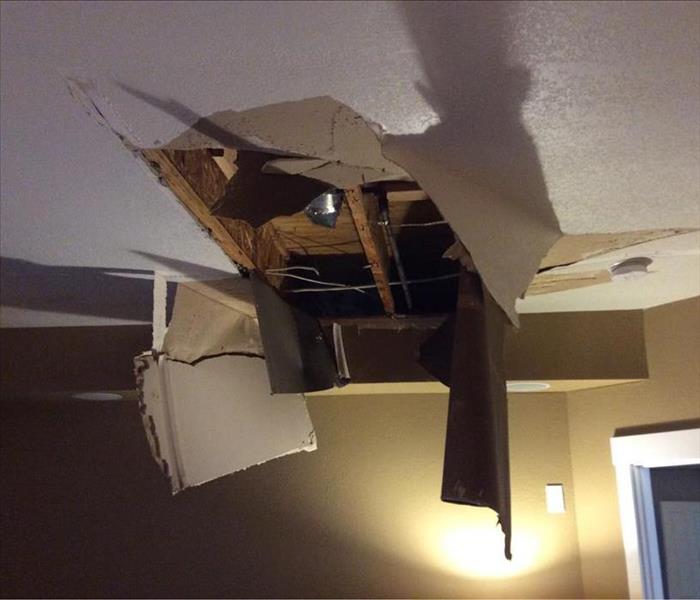 Water damage restoration is a major undertaking that requires time, effort, and investment.
Water damage restoration is a major undertaking that requires time, effort, and investment.
Water damage restoration is a major undertaking that requires time, effort, and investment. Once the restoration process is complete and your home is restored to its pre-damaged condition, it's essential to implement post-restoration home maintenance to prevent future damage. In this blog post, we will discuss crucial tips and practices to maintain your home's integrity and safeguard against potential water damage in the future.
Regular Roof Inspections
The roof is your home's first line of defense against water intrusion. Conduct regular inspections to identify any damaged or missing shingles, cracks in the roof, or areas prone to leaks. Addressing these issues promptly will help prevent water from seeping into your home during rainstorms or melting snow. Consider hiring a professional to conduct a thorough roof inspection annually or after severe weather events.
Maintain Gutters and Downspouts
Clogged gutters and downspouts can lead to water backup and overflow, causing water damage to your home's foundation, siding, and basement. Regularly clean out debris from gutters and ensure downspouts are properly directed away from the foundation. Additionally, consider installing gutter guards to minimize debris buildup and make maintenance easier.
Check for Plumbing Leaks
Undetected plumbing leaks can cause significant water damage over time. Periodically inspect all visible pipes, faucets, and plumbing fixtures for signs of leaks, such as water stains, mold growth, or drips. Address any leaks immediately by repairing or replacing the affected components. Consider installing leak detection devices that can provide early warnings of potential leaks or flooding.
Test Sump Pump Functionality
If your home is equipped with a sump pump, it's crucial to test its functionality regularly. Pour water into the sump pit to ensure the pump activates and effectively pumps out the water. In regions prone to heavy rainfall or flooding, consider installing a backup power source, such as a battery or generator, to ensure the sump pump continues working during power outages.
Keep an Eye on Moisture Levels
Excess moisture can lead to mold growth and damage to your home's structure and belongings. Regularly monitor moisture levels in areas prone to dampness, such as basements, crawl spaces, and bathrooms. Use dehumidifiers to control humidity levels and ensure proper ventilation in these areas. Additionally, promptly address any signs of moisture intrusion, such as damp walls, musty odors, or condensation on windows.
Maintain Landscaping and Grading
Proper landscaping and grading can help redirect water away from your home, reducing the risk of water intrusion. Ensure that the ground slopes away from the foundation, preventing water from pooling near the building. Regularly clean out debris from yard drains and make sure they are functioning effectively.
Review and Update Home Insurance Coverage
Regularly review your home insurance policy to ensure it provides adequate coverage for water damage. Consider adding endorsements or riders that specifically cover water damage and its aftermath, such as mold remediation. Property value, improvements, and the addition of valuable belongings may require adjustments to your insurance coverage.
Post-restoration home maintenance is crucial to prevent future water damage and protect your home from potential risks. By conducting regular roof inspections, maintaining gutters and downspouts, checking for plumbing leaks, testing sump pump functionality, monitoring moisture levels, maintaining landscaping and grading, and reviewing and updating your home insurance coverage, you can safeguard your home against water damage and ensure its long-term integrity. Remember, proactive maintenance is key to preventing costly and disruptive water damage in the future.
Protecting Your Property: Tips for Preventing Water Damage During Construction
3/27/2023 (Permalink)
If you're having a home built or renovated, chances are your contractor has been talking to you about what to expect during the construction process. While most contractors will take great pains to protect your property from water damage, there are still some things you can do yourself and your family can do together to keep the home safe and sound during construction.
Take a proactive approach to construction water loss
In the construction industry, it is important to take a proactive approach to water loss. When you work with a contractor who understands how important it is for you and your business, they will make sure that they do everything they can to prevent water damage during construction.
Taking a proactive approach means working with contractors who have experience in this area. They know what types of materials work best and how long they last so that when something happens like a pipe bursts or there's an unexpected leak in your roofing system, the damage has been minimized as much as possible.
If you don't take this kind of approach, then when something does go wrong, it could cause major problems for both yourself and your business!
Fluctuations in temperature and humidity
You'll know it's happened when you notice leaky spots or uneven surfaces in your home. Fluctuations in temperature and humidity can cause your home's walls, floors and ceiling to move out of place. This is called "settling."
It's not always possible to prevent settling with simple measures like propping up furniture and avoiding heavy objects on shelves. If you live in an older home, there may be no way around it. If this isn't an option for whatever reason, maybe because the house is brand new, then here are some ways that contractors can help keep things level.
If you're concerned about water damage during construction, you may want to keep an eye on the weather forecast so that you know when to keep construction crews indoors.
HVAC and Proper Ventilation
Construction water loss can also come in the form of dirt, debris and dust getting into the air conditioning system. Your HVAC contractor can help you prevent this kind of problem by installing a proper ventilation system for your home during construction.
A proper ventilation system should include an exhaust fan that is capable of removing air from every room in your home and blowing it outside through an opening near where it exits the house.
Intake vents near windows or doors where fresh air enters the house, which allow you to control what types of pollutants enter your home.
Water damage in your home or business is among the most common problems faced by property owners, especially during construction. This is because water loss during construction can be quite severe and costly if not prevented in time. Preventing water damage during construction involves taking a proactive approach towards dealing with this problem. Hiring a professional when your property suffers from damage during construction.
Water Mitigation vs. Water Damage Restoration
1/20/2023 (Permalink)
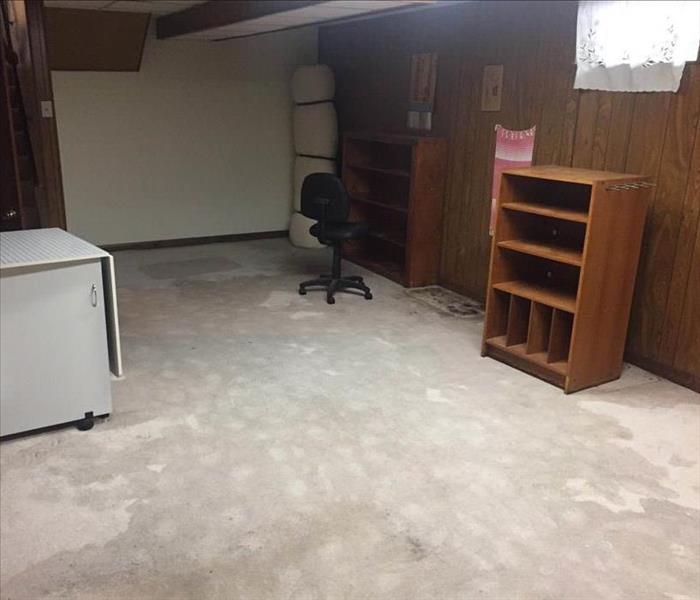 You will generally need both processes to get your home back to normal.
You will generally need both processes to get your home back to normal.
Water mitigation and water damage restoration are two common methods used by professionals to restore water damage. Many people confuse the two terms, but they are different and serve different purposes. Water mitigation focuses on drying and sanitizing the affected area, while water damage restoration puts the property back to its pre-incident state. Here we will break down the two concepts and show how they are both essential for recovering from a water damage event.
Water Mitigation
Water mitigation puts your property back to its pre-incident state by removing any standing water and drying out the structure. The goal of water mitigation is to prevent mold from growing once it has been removed from a building or home. This may involve drying out wet carpeting and floors with fans or dehumidifiers; removing soaked drywall; cleaning up mold growth caused by excess moisture; etcetera.
During water mitigation, the technicians will work to build a temporary fix to the cause of the water damage. This will ensure the water does not continue to flow into your home or business. It will also ensure that the technicians can focus on getting the water out of the structure in order to minimize the damage as much as possible.
Water Damage Restoration
Water damage restoration is the process of repairing structural and cosmetic damage to a property caused by water intrusion. This is a very common issue, as water damage can occur in any residential or commercial property, for a variety of reasons. Water damage restoration is an important process to follow after a water loss incident because it ensures that your property’s structure has been properly restored to its original condition.
Often, the water damage restoration process needs to start with water mitigation. This process clears the way for the actual restoration to take place. When both processes are complete you will notice that your Boulder, CO home looks better than before because we have returned everything back as close as possible to what it was before your loss occurred (or even better).
The water damage restoration process involves implementing a permanent fix for the cause of the water damage. Whether it's a broken pipe or a hole in the roof, this is the stage where SERVPRO of Lafayette/Louisville will get to work to make sure the cause of the water damage will no longer be a problem.
Mitigation and Restoration Go Hand-In-Hand
In conclusion, water mitigation and water damage restoration are two distinct processes that are used to address the issue of water damage in buildings. Water mitigation is the process of reducing the amount of water damage that occurs after a water damage event starts, typically through the use of techniques such as drying out the water with fans and dehumidifiers. Water damage restoration, on the other hand, is the process of repairing and restoring a building or structure that has already been damaged by water. You will generally need both processes to get your home back to normal.
How Do You Know if You Have a Roof Leak?
11/3/2022 (Permalink)
How Do You Know if You Have a Roof Leak?
Water leaks are a homeowner's worst nightmare. They can waste a lot of money, damage your home, and put you at risk for mold growth. If you think you have a roof leak that needs repair, here are some things to look out for.
Shingle damage
Shingles are designed to withstand a lot of abuse, but they aren't indestructible. Hail and high winds can cause shingles to be lifted and torn off the roof. Ice dams will do the same thing as well. A roof leak that was caused by a sagging or rotting deck should be repaired right away before it becomes worse and causes more damage to your home's structure. The longer you wait for this type of repair, the harder it will be for you when it comes time to replace your roofing materials.
If your shingles have been damaged, there's a good chance that there is some sort of water infiltration problem with your roof as well; otherwise, why would they have become damaged in the first place? Water leakage across seams and through layers of shingle will quickly lead to mold problems behind walls and ceilings - which could then lead further structural damage down the road if left untreated. Take care now so that later doesn't cost even more money (and stress).
Mold
Even if you don't see the leak right away, mold can still grow. Mold is a fungus that grows in damp areas. It can grow on wood, drywall, and other surfaces. Mold looks like spots or splotches of black, green, or white fuzz on your ceiling or walls. Repairing a roof leak quickly will help protect your Lafayette, CO home from mold damage.
Ceiling stains
If your ceiling has black mold, black streaks, or black spots that have been there for a while, this is likely the result of water damage. If you see pink or red discoloration in addition to these stains, it means that the wood under your ceiling has been damaged by moisture. The same is true if you see blue discoloration.
Spots on the ceiling
If you see spots on your ceiling and aren't sure why it could be because of a roof leak. However, it could also be due to condensation or even water damage caused by other issues like plumbing problems. Therefore, if you suspect that there's a leak in your roof but don't know for certain, it's best to call a professional.
Water in your light fixtures
Water in your light fixtures is a sign that you have a roof leak. When it rains, water will run down the edges of your home and can enter through cracks and crevices in your roof or around the attic vents. If you’re experiencing water damage, you may notice mold growing on the ceiling or walls in these areas.
Once you’re sure there’s a leak, take a look at how far back it goes: if only one area is damaged but everything else looks fine, chances are it just needs some minor repairs rather than an entire replacement.
- If you notice any of these signs, you should call a roofing professional right away to stop the leak before more damage occurs.
- If you notice any of these signs, you should call a roofing professional right away to stop the leak before more damage occurs.
- Water stains on your ceiling or walls—especially if they are in the same spot
- Raised spots on your ceilings or walls—these may be caused by mold and mildew
- Mold growth near windows or doors that have been left open for extended periods of time
If you notice any of these signs, it’s time to call a professional like SERVPRO of Lafayette/Louisville. We offer free inspections, so call us today at (303) 604-6607 to schedule yours.
When To Replace Bathroom Supply Lines
8/15/2022 (Permalink)
Replacing Bathroom Supply Line
The network of pipes that bring clean water and remove dirty water in your home is critical to your enjoyment and health. Nowhere is this more apparent than your bathroom. The sink, toilet, bath, and shower all depend upon a functioning plumbing system. Supply line damage can quickly put a stop to this, not to mention create a water cleanup problem.
The majority of your supply lines are hidden behind walls so it can be hard to see what is going on with them. There are a couple of ways to determine if your pipes are in good shape. A sudden bathroom leak is one indication. A series of leaks over a couple of years is the second sign of trouble.
Replacing and Repairing
Supply line damage in your bathroom demands immediate attention. If the situation allows, you can get by with a quick repair that will stop the leak and replace a section of pipe or a connector. However, if the problem indicates a systemic failure, it might be better to replace all of the pipes at once. You have three excellent options for the type of replacement pipe:
- PVC pipe
- Copper pipe
- Stainless steel pipe
Plastic materials are easy to work with and are generally less expensive. Metal pipes cost more but are better for longevity and often come with lifetime warranties. New pipes will greatly reduce the likelihood of a supply line leak in the near future.
Cleaning Up Water Damage
Major supply line damage in your home in Lafayette, CO, calls for professional services. A water remediation franchise such as SERVPRO is always Here to Help. As soon as you call, a team of trained technicians will arrive at your home and get to work on minimizing damage. Workers will quickly remove water and dry out impacted areas to prevent primary and secondary damage.
Maintaining your plumbing system in your home and working with cleanup professionals can save you time and money.
7 Steps in the Sewage Cleanup Process
5/16/2022 (Permalink)
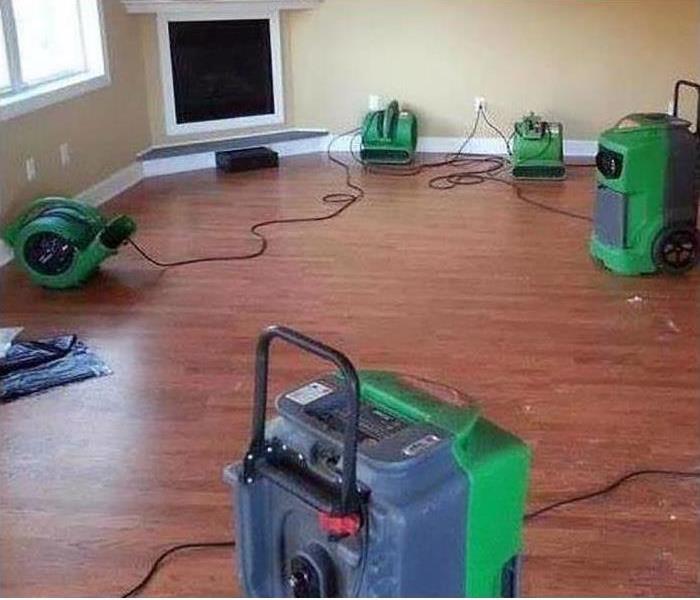 When your home requires water damage repair and restoration, our crew is here to help! We're standing by 24/7 to respond to your emergency.
When your home requires water damage repair and restoration, our crew is here to help! We're standing by 24/7 to respond to your emergency.
The Sewage Cleanup Process Has Seven Steps
Discovering an overflowing toilet in your Lafayette, CO, home can be a stressful and disgusting experience, especially if it involves sewer issues. The sewage cleanup process puts you in contact with many contaminants, so it's vital to take several steps to ensure safe and thorough disinfection.
1. Protect Everyone
First, keep everyone safe. Turn off the electricity and restrict children and pets. Everyone working in the area must wear personal protective equipment to shield themselves and prevent cross-contamination into other locations. This PPE includes hair covers, protective goggles, respirators, rubber gloves, coveralls and rubber boots.
2. Extract Standing Water
You must eliminate all of the standing water as soon as possible. The best way to do this is with a wet/dry vacuum.
3. Remove Debris
After removing all of the water, you must clear the remaining debris. The wet/dry vacuum is ideal for removing smaller wet debris that can come from a flooded toilet.
4. Remove Contaminated Materials
All contaminated items must be removed so that you can properly clean the affected area. While removing them, you can determine what is salvageable and unsalvageable.
5. Discard Unsalvageable Items During Sewage Cleanup
Discard the unsalvageable materials by placing them in thick plastic trash bags or securely wrapping them in plastic sheeting. This method will help protect against spreading the contaminants to other areas.
6. Wash and Sanitize All Surfaces
After a sewer backup, it's essential to thoroughly clean and sanitize all surfaces that have come in contact with the contaminated water. Be sure to clean tiny crevices and any surface on which the water could've splashed.
7. Dry Everything Completely
Dry everything totally, including the structural materials and contents. Mold can start forming as quickly as 24 hours of moisture exposure. You can dry everything with fresh air, heaters, fans and dehumidifiers. Flood damage restoration experts have the experience and industrial equipment to do this quickly and thoroughly.
A flood can be disastrous, but the severity is taken to a new level when sewage cleanup is involved. Utilize these tips to perform this job safely and effectively.
Everything You Should Know About Water Damage
4/19/2022 (Permalink)
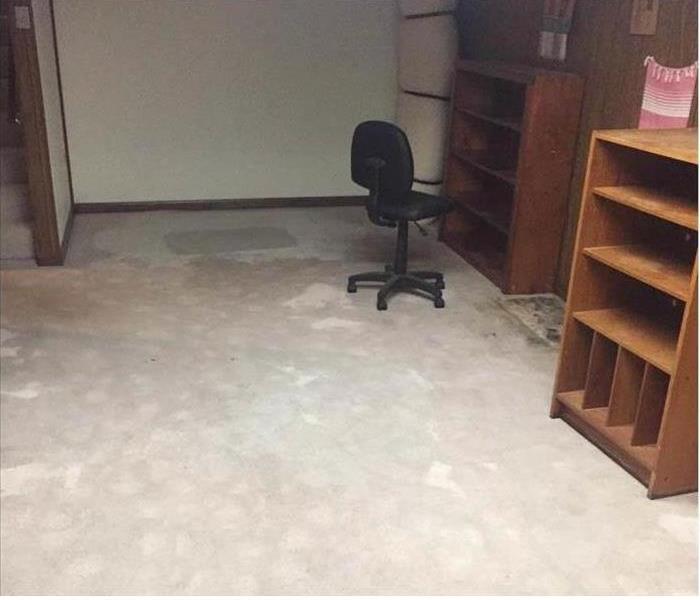 SERVPRO is trained to handle any water damage disaster. We were called into this home after they experienced a leak that affected the basement.
SERVPRO is trained to handle any water damage disaster. We were called into this home after they experienced a leak that affected the basement.
What You Need To Know About Water Damage
A pipe burst, a rooftop leak or a flooded basement are stressful situations, especially if you are a new homeowner in Superior, CO. Water damage can devastate your home and your belongings if you do not act fast and appropriately. Prepare for these situations by learning more about them, including potential damage causes, the cleaning process, and the restoration of the affected area.
Water Damage Causes
Your house can be damaged by a variety of water-related incidents. As you look for the culprit behind the damage, consider the following causes:
- Leaking/broken water line and pipes
- Natural disasters (thunderstorms, tornadoes, etc.)
- Firefight aftermath
- Sewage backups
- Malfunctioning bathtubs, sinks and toilets
- Leaking water appliances
If possible, repair the source or hire an expert to fix it immediately. Record any information so you can provide it to your insurance company and water damage repair technicians. Consider these likely incidents as you enact preventative measures.
Cleaning Process
Once the pipe burst or leak is controlled, the remediation crew will inspect the damage, remove the water and dry every impacted surface. After those steps are complete, they will move on to cleaning the location. Any water damage, from leaks to flooding, carries some degree of contamination. The professionals guarantee your household's safety by eliminating as many germs as possible. They might use antimicrobial, antibacterial or disinfectant treatments as needed.
Final Restoration
After the damaged area is completely sanitized, the crew will start the restoration process. This service can be as minor as repainting walls, repairing wet drywall and installing new carpet. It can also be as extensive as rebuilding entire sections of the building. The employees will try to repair contents as much as possible to keep your expenses low. They will only replace when the material has been damaged beyond salvation.
Disasters that cause water damage such as a flood, a broken appliance and a pipe burst can be overwhelming, especially if it is your first time dealing with them. Learn everything you can to anticipate these specific circumstances.
6 Steps To Follow After Unwanted Water Has Entered Your Home
3/1/2022 (Permalink)
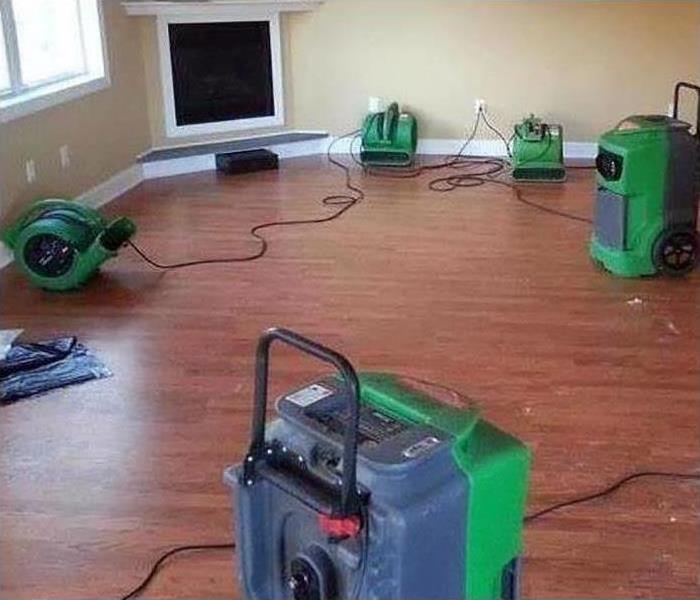 We have the inspection and drying team to restore your home to its pre-water damage condition. SERVPRO will do it "as if it never happened".
We have the inspection and drying team to restore your home to its pre-water damage condition. SERVPRO will do it "as if it never happened".
Following These 6 Steps After Unwanted Water Has Entered Your Home
Water damage to your home in Lafayette, CO, is never a welcome occurrence. Whether from broken pipes, toilet overflow or storm flooding, it’s important to act quickly when your home has unwanted water present. Damage can be minimized by following these six steps to assess and remedy the situation.
1. Identify the Source
Locate the source of the intruding water and stop the flow, if possible. If it’s coming from a burst pipe, plumbing fixture, or appliance, shut off the source. You may be able to do this locally, such as closing the valves under a sink or at the base of a toilet, or you may need to shut off your home’s main water supply. If you can’t identify the source, it is recommended to seek professional help immediately.
2. Shut Off Power
Staying safe is imperative when evaluating water damage. Water and electricity are a dangerous combination. Unplug electronics and turn off power to the home if there is pooling moisture present.
3. Begin Water Cleanup
Get rid of standing water by any means available. If there is a safe power source, a shop vacuum can quickly remove any liquid. A sump pump is useful if there is a large volume of standing water in a basement. Buckets can be utilized for bailing water when electricity is not accessible. Use mops and towels to soak up remaining moisture. Remove saturated items such as area rugs and upholstered furniture.
4. Start Drying
Utilize fans to circulate air. Open windows and doors if weather conditions allow. If large areas are impacted, a dehumidifier can help speed up drying.
5. Dispose of Damaged Property
If they have gotten wet, some items cannot be salvaged. Responsibly get rid of permanently damaged property.
6. Clean and Disinfect
Many sources of water such as toilets, sewers and flooding following severe weather are teeming with harmful bacteria. Carefully clean and disinfect all affected property once it is completely dry.
The key to working with water damage is acting quickly. By removing all water, completely drying, cleaning and disinfecting all items and surfaces involved, you have a better chance of minimizing losses.






 24/7 Emergency Service
24/7 Emergency Service




